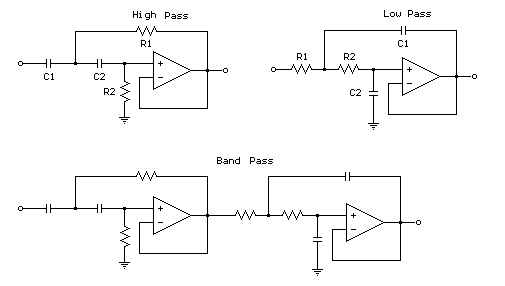Second Order Active Filters
2nd order active filtering has two main advantages:
- High impedance input, low impedance output
- greater attenuation at high range (-40dB/decade as opposed to -20dB/decade for RC filter)
The high input impedance provided by an op amp circuit protects the instrument providing the signal from passing excessive current which could cause a voltage drop in the measurement signal or damage to the instrument itself.
Because the filter is second order, the rolloff after the cutoff frequency on a bode plot of a 2nd order low pass filter for example, is -40 dB/decade as opposed to -20 dB/decade for a first order (RC) filter which means significantly greater attenuation outside the pass band and a sharper cutoff. This can be very useful if the noise frequency is close to the desired signal frequency.
(http://ourworld.compuserve.com/homepages/Bill_Bowden/opamp.htm)
Where the cutoff frequency for both high and low pass filters in Hz is:
External Links

